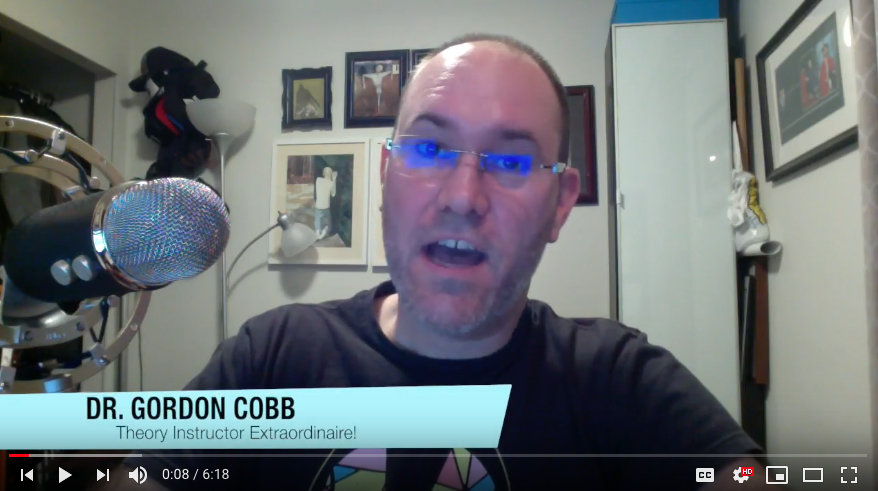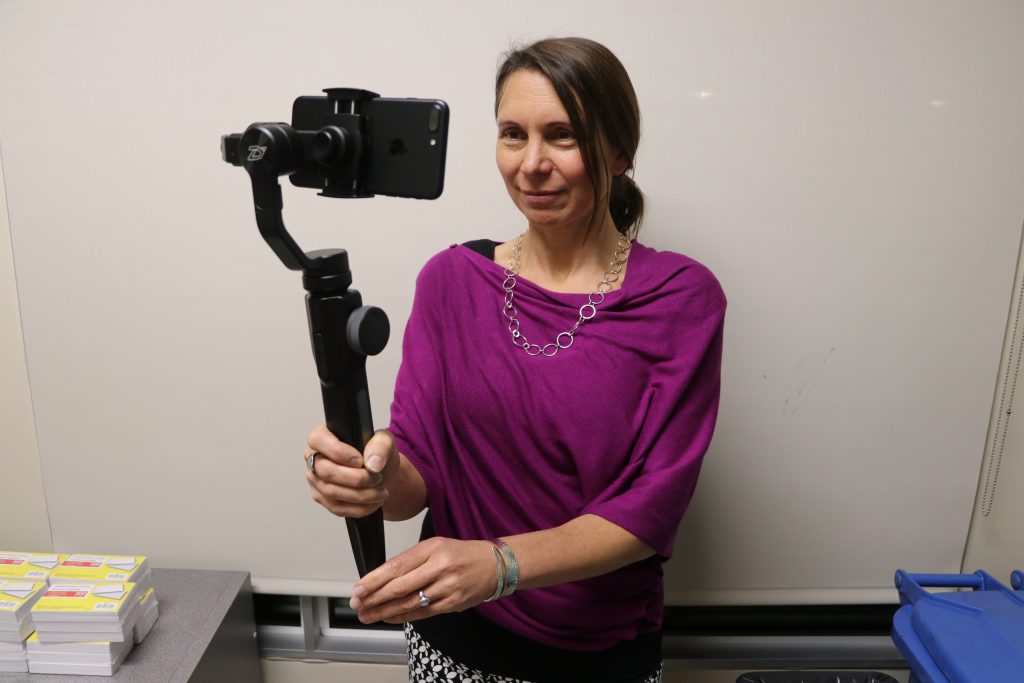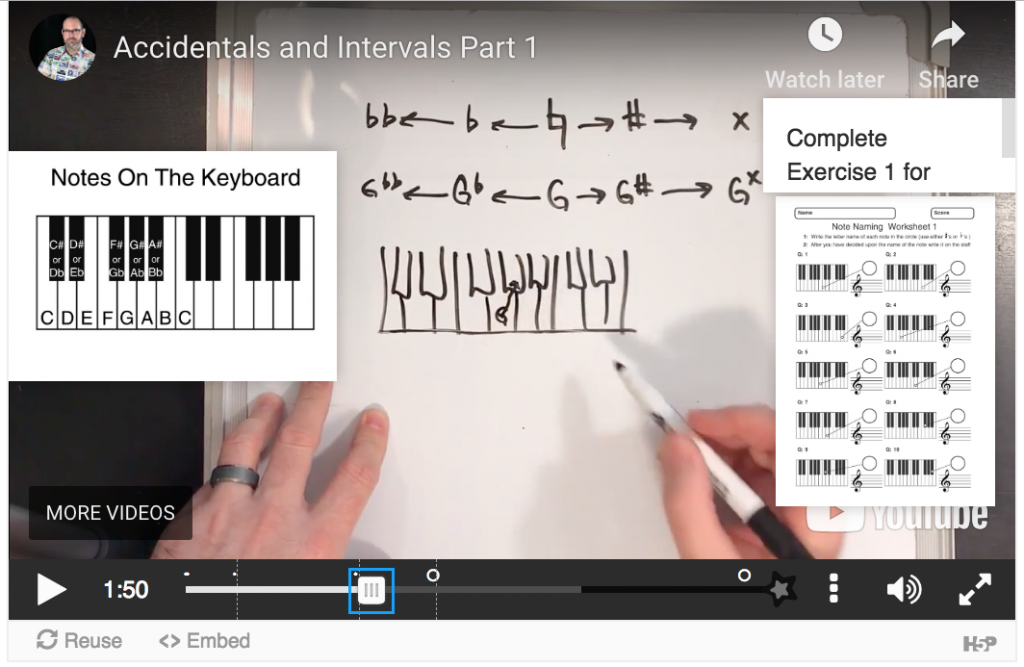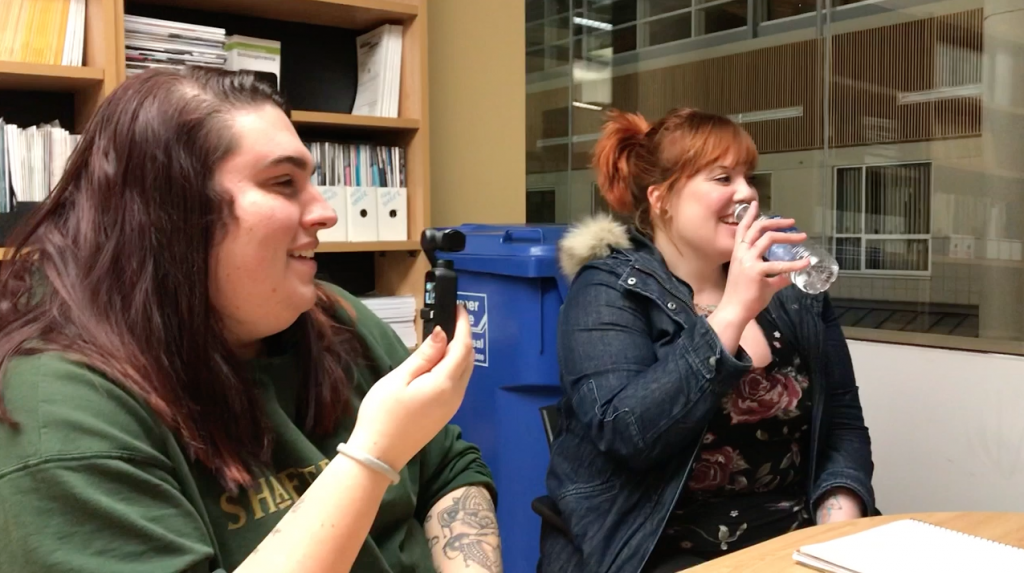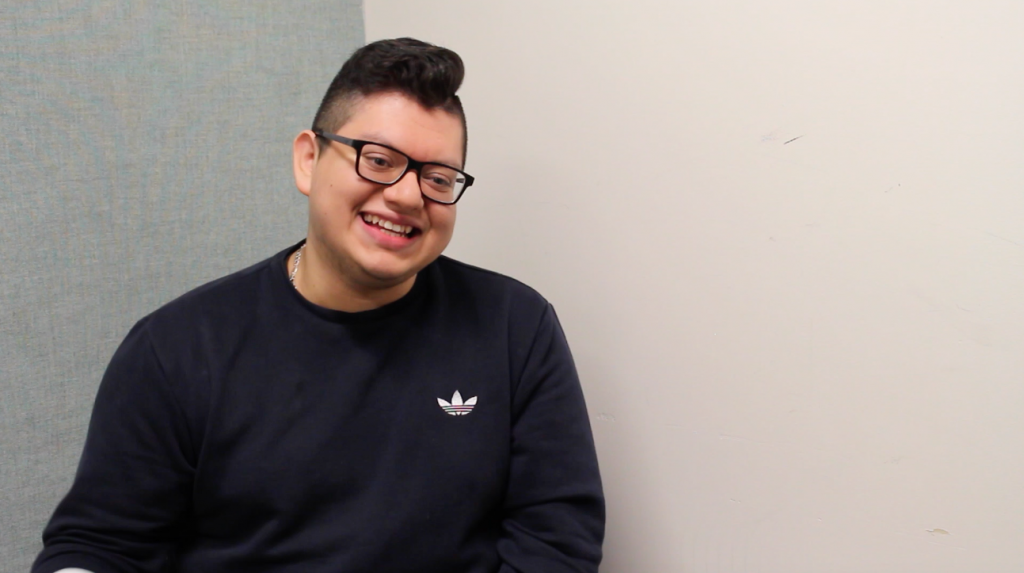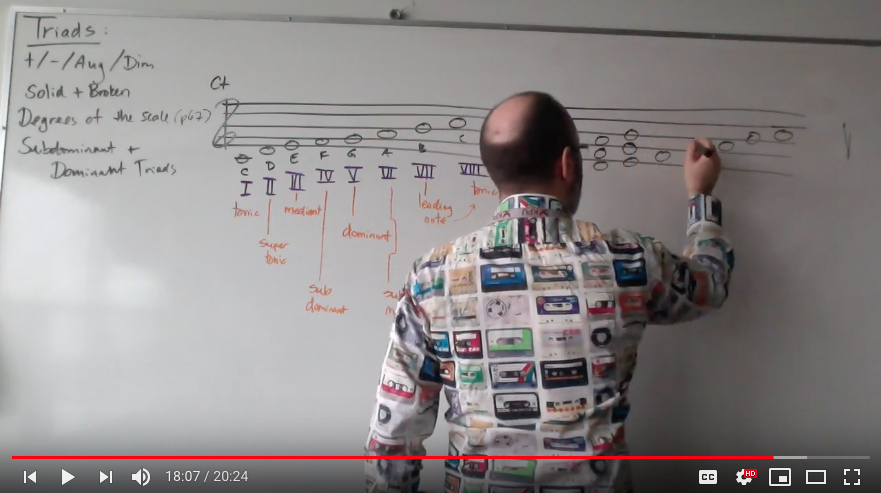Chapter 1 of 5
A camera can function as an incredibly powerful tool in the classroom. From assessment & feedback to documentation & analysis, using a camera in your class encourages experimentation, collaboration, reflection and creativity. Whether you own a cellphone or a DSLR camera, including photography and videography within your curricula and classroom activities can positively impact learning outcomes and learner experience.
In this workshop/blog post I/we will:
- explore photography/videography as a tool for creation and communication
- building awareness of the need for 21st Century digital literacies in post-secondary education
- consider how one may expand innovation in teaching, learning and curriculum through applied photography and videography
- view photography and videography through the lens of different educational models and frameworks
- illustrate practical examples of photography and videography use within the classroom
- survey and interact with current and emerging photo & video technology
A camera can help with:
New and emerging skills and literacies:
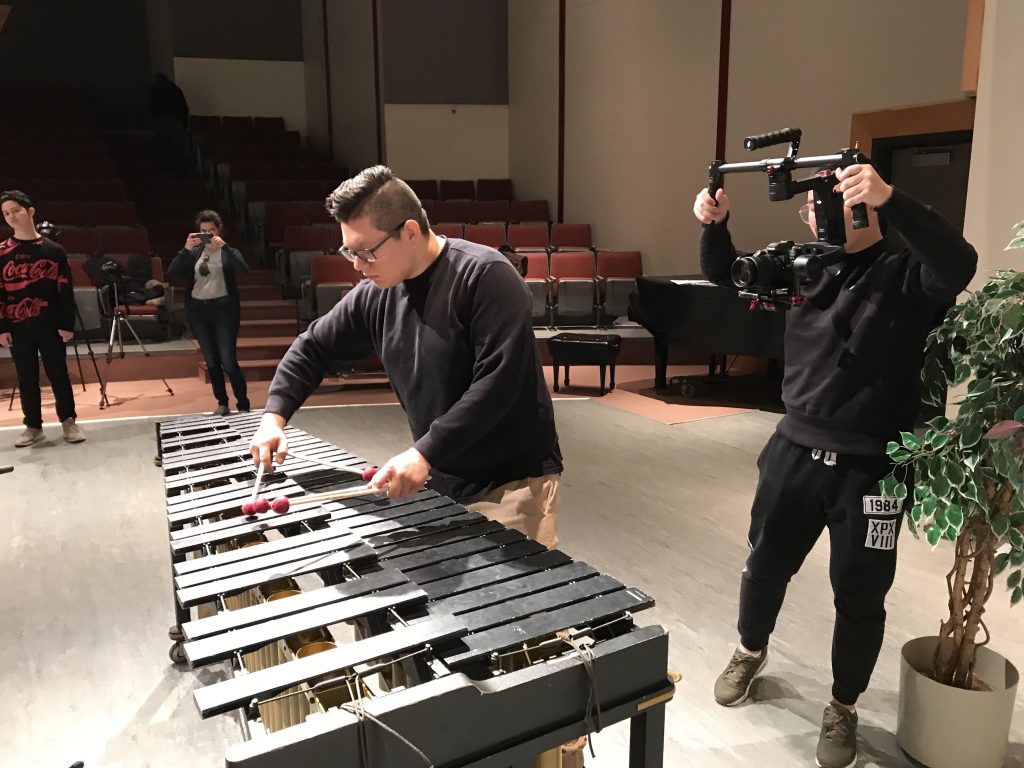
- Facilitate excellence and innovation in teaching and learning
- To engage with digital natives
- Contribute to 21st Century skills and transferable competencies (collaboration, information gathering, problem solving, deciphering information etc.)
- Prepares students going forward into a world where information sharing extends beyond text-based communication
- To add to the ever-changing landscape of education – blended and online courses can benefit from photo/videography
Expressions and communication:
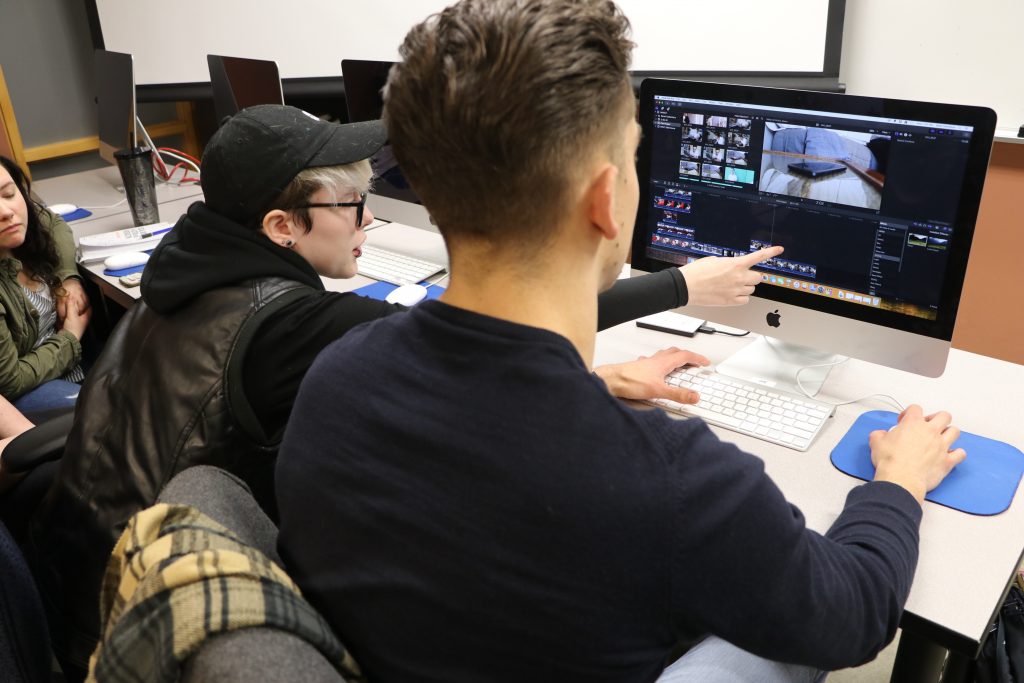
- Interact with curricular content using different modes of expression and communication
- Encourages multiple ways of knowing
- Creating a space for providing context: what you might do with something, how to use it/fix it/engage with it, bring unique intercultural perspectives
- Provides autonomy & choice for learners and educators to express or communicate ideas in a different manner
- Express emotional intelligence – video can elicit and demonstrate an emotional response from or to a student
- Allows students to conceptualize and experiment and have a concrete experience (doing) and then reflect upon it afterwards – students have to apply their learning in a different way
Collaboration:
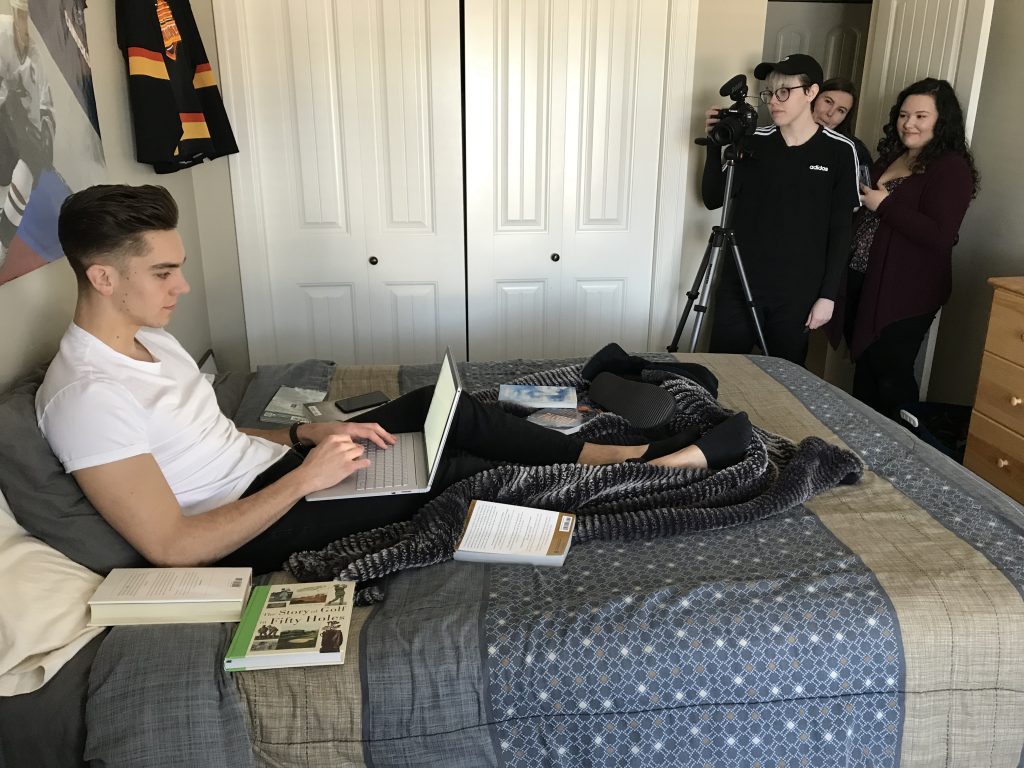
- Group work is often required in today’s work environment
- Connection and relation to content, each other and to the instructor
- Facilitates the development of healthy relationships
- Provides opportunities for sharing of ideas, knowledge and skills
Reflection, Analysis and Assessment:
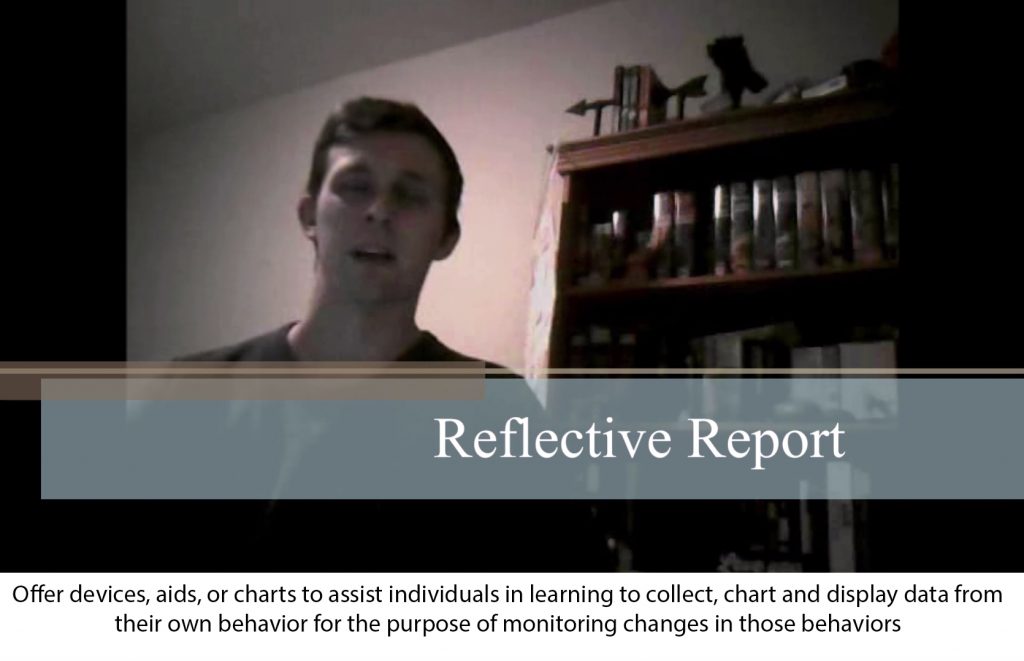
- intercultural considerations can be expressed with video reflection and assessments – students can share and celebrate their cultural perspectives and instructors can give more support emotionally for students than within written notes
- can be used by learners and instructors for formative and summative feedback
- Provides opportunities for students to dig deep into projects through video-based reflectivity
- Provides opportunities to analyze one’s delivery or performance as captured within video footage
Student wellness:
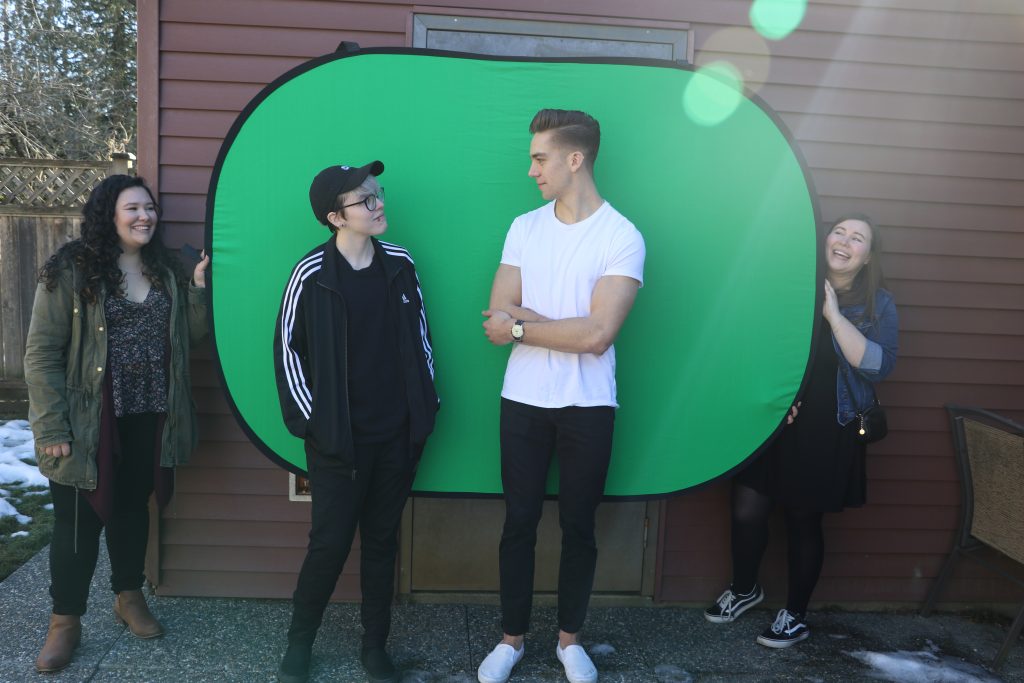
- Great for students with varying abilities, not everyone processes text in the same way – another way to capture ideas, especially if they are new to English or have a learning designation
- A way to be intentional in creating community by connecting to students – taking responsibility for creating a sense of community – i.e. creating a welcome video to introduce yourself to your students before the term begins
- A way for educators to express and communicate and demonstrate their teaching philosophy to students
- motivation and success: the more motivated students are to complete a task the more successful they often are and video can be a motivating factor within classroom activities
Practical Application:
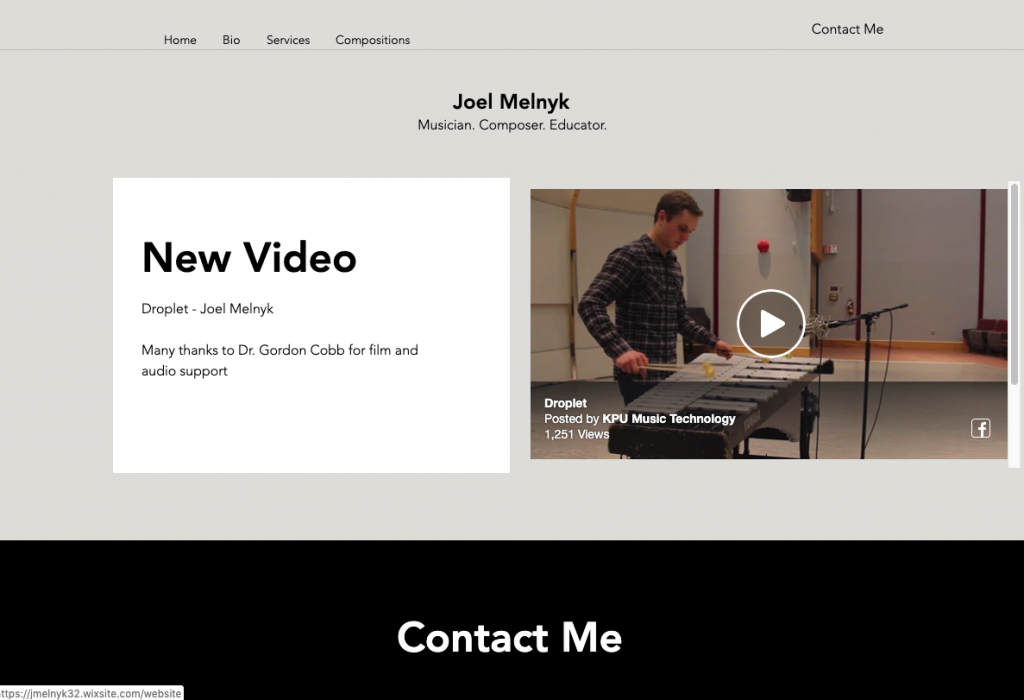
- Provides content and materials for portfolios, presentations, grants/funding and research/inquiry-based learning
- Capture authentic classroom moments to transcribe later
Think & Share:
When in the past have you used image and/or photography or video in your curricula/classroom activities?
Before we get technical, let’s get theoretical…
BLOOM’S DIGITAL TAXONOMY
Andrew Churches devised “Bloom’s Digital Taxonomy” as a way for
educators to think about how to use digital tools for teaching and learning in the age of web 2.0 technologies.
I was recently introduced to Bloom’s Digital Taxonomy by my colleagues at the Teaching and Learning Commons and it has provided a new and exciting lens through which I can reflect upon my work as a 21st Century educator. It begins with lower-order thinking skills such as remembering and understanding and increases to higher-order thinking skills such as evaluating and creating. Each level contains power verbs that you can use to envision various kinds of classroom activities.
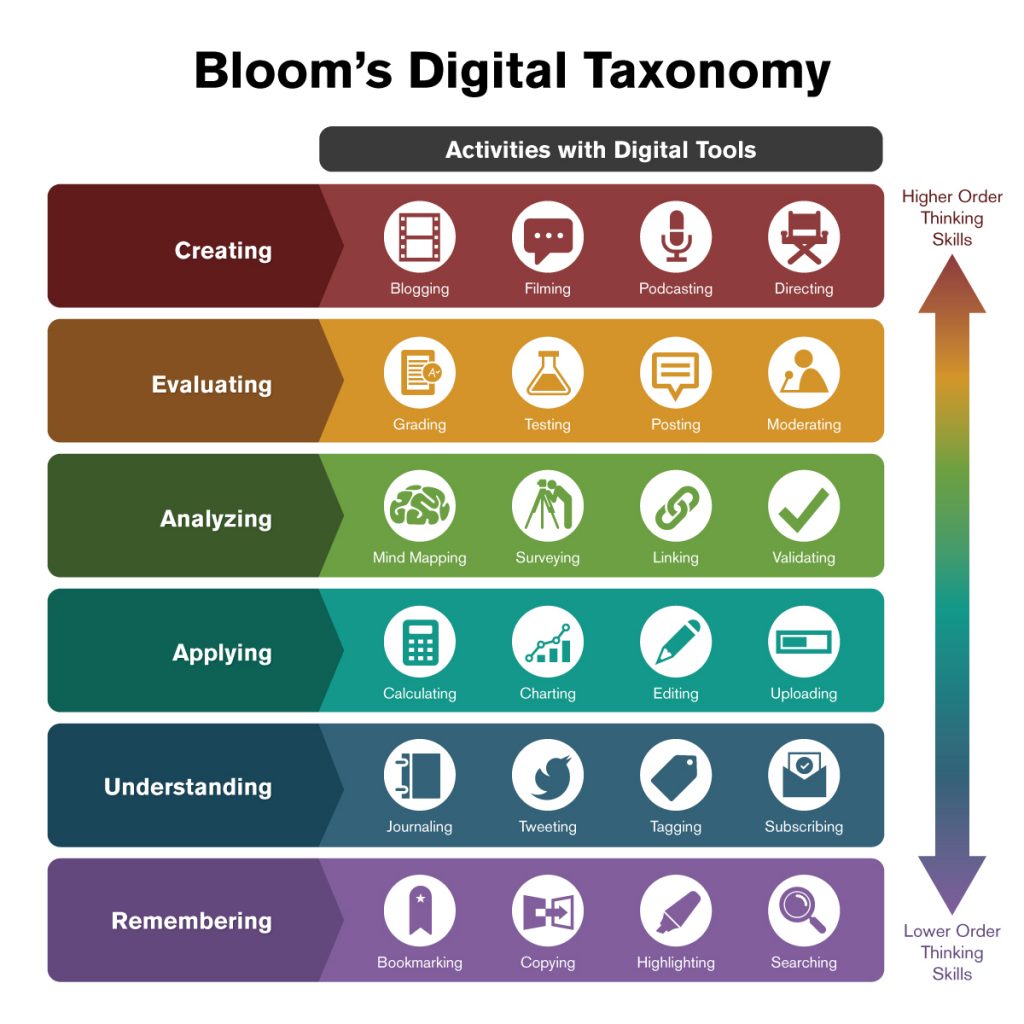
I have been using a variety of digital tools for almost 20 years to write
and record songs, create short films and music videos, build a showcase
portfolio website, develop and promote my business online, and develop a
thriving teaching practice. Cameras have played a central role in my teaching practice and research; in fact, learning how to use a camera for photography and videography transformed my work as an artist and my approach to teaching.
I have assembled a collection of images that capture how I use photography and/or videography in each level of Bloom’s Digital Taxonomy pyramid. I hope this inspires you to reflect upon your own teaching practice and question how you might incorporate a camera into your own curricula.
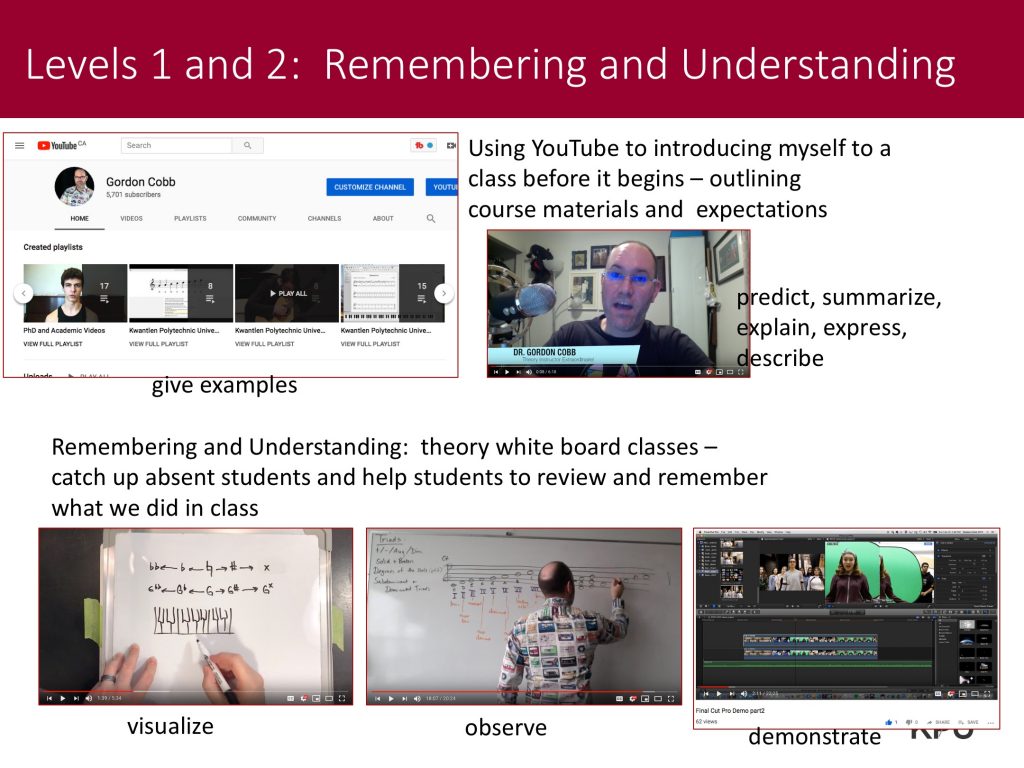
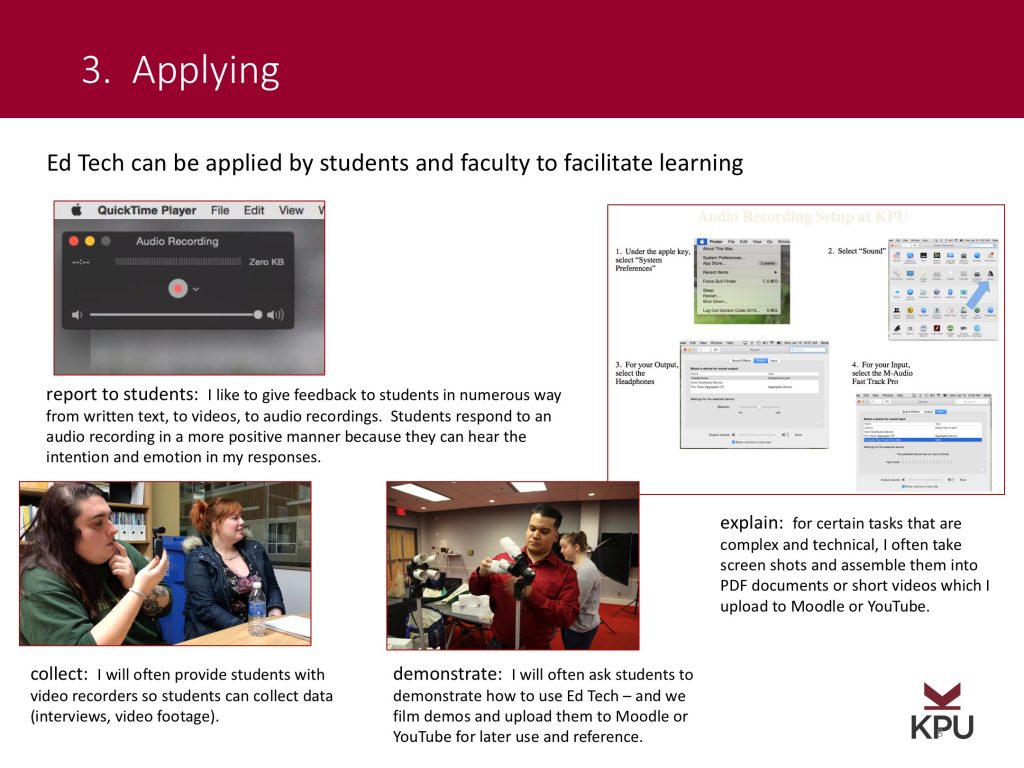
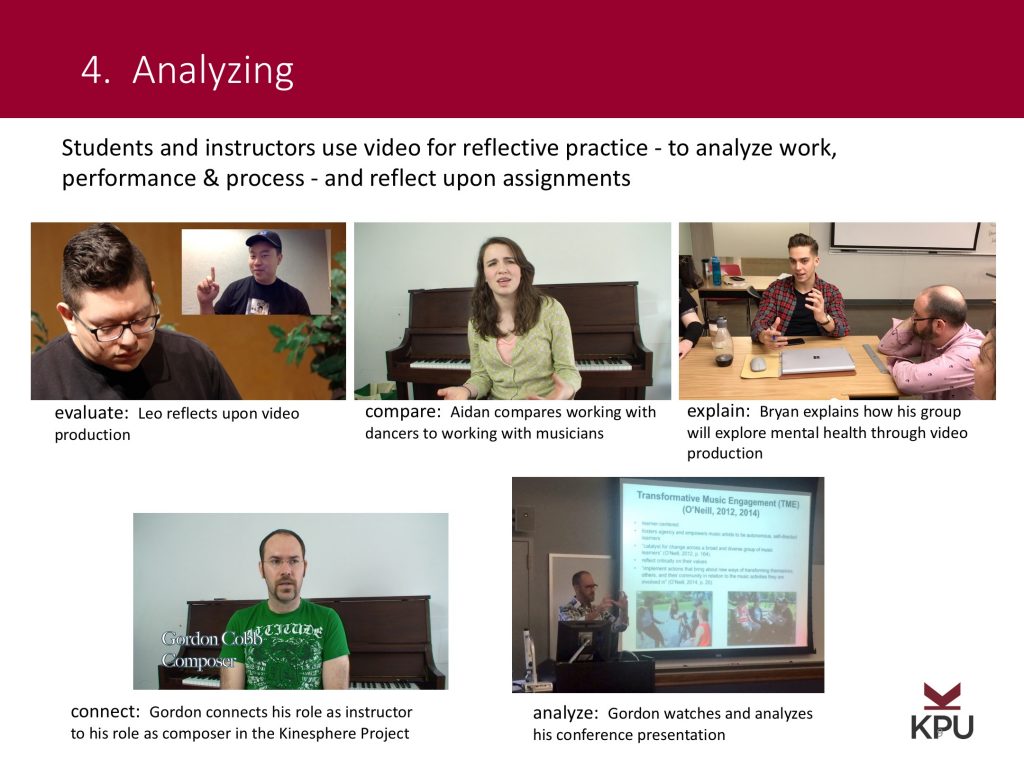
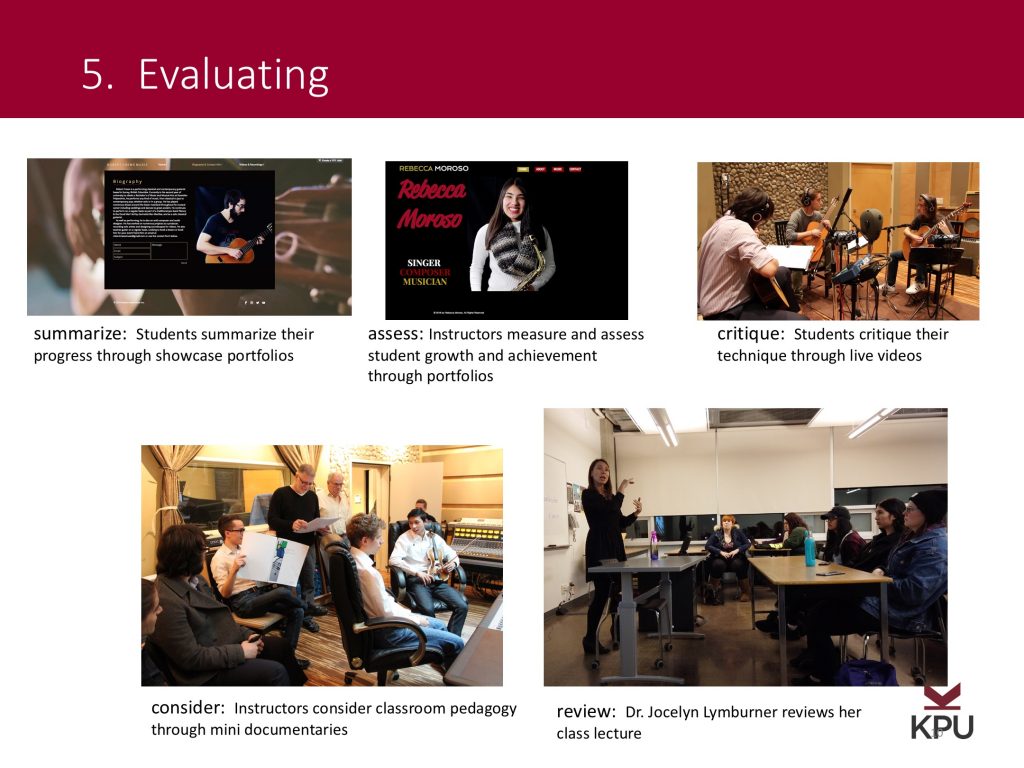
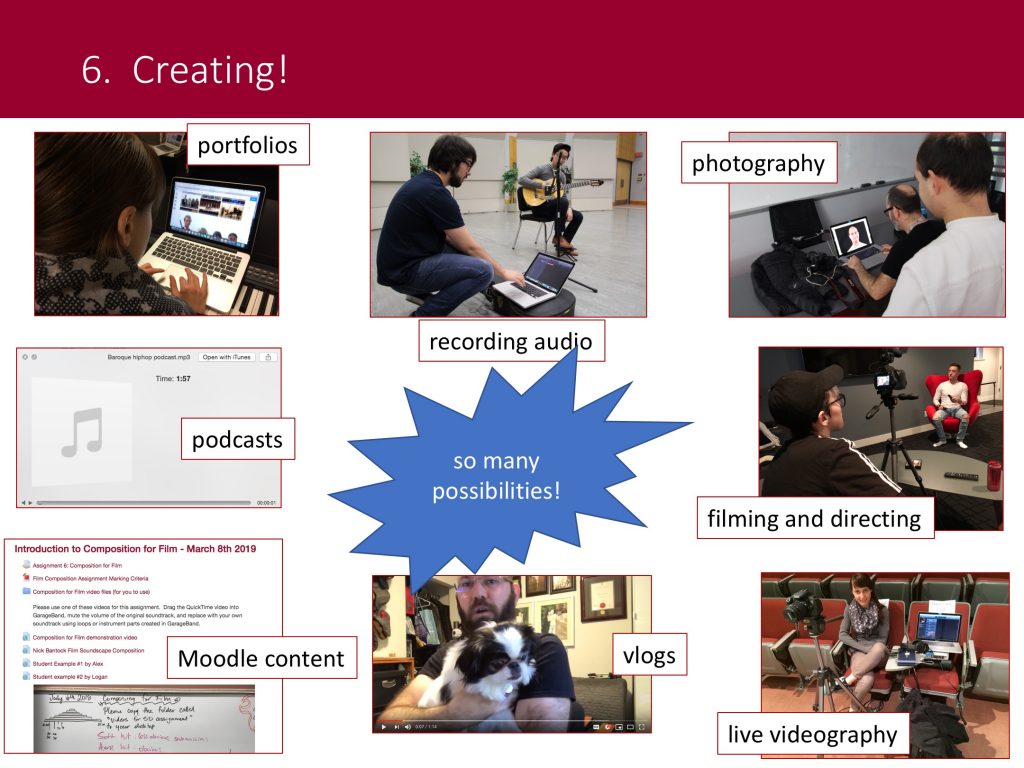
UNIVERSAL DESIGN FOR LEARNING (UDL)
Universal Design for Learning (UDL) is an educational
framework based on learning sciences research that facilitates the development
of learning environments that can accommodate individual learning differences
through multiple means of representation, expression and engagement. It is a great way to accommodate the needs of
all learners and learning styles and is used by many of my colleagues at
KPU.
In order to explore UDL through the lens of photography and videography, I am borrowing an infographic and language contained within the CAST website at http://udlguidelines.cast.org/
I thank CAST in advance for allowing me to re-design their beautiful UDL Guidelines infographic into an interactive image using H5P. You can click on each of the hotspots below to cue a pop-up image that illustrates how I have used photography or videography in the classroom – from the point of view of UDL principles.
Think & Share:
In what context might you like to begin incorporating photography or video into your future curricula or classroom activities?
